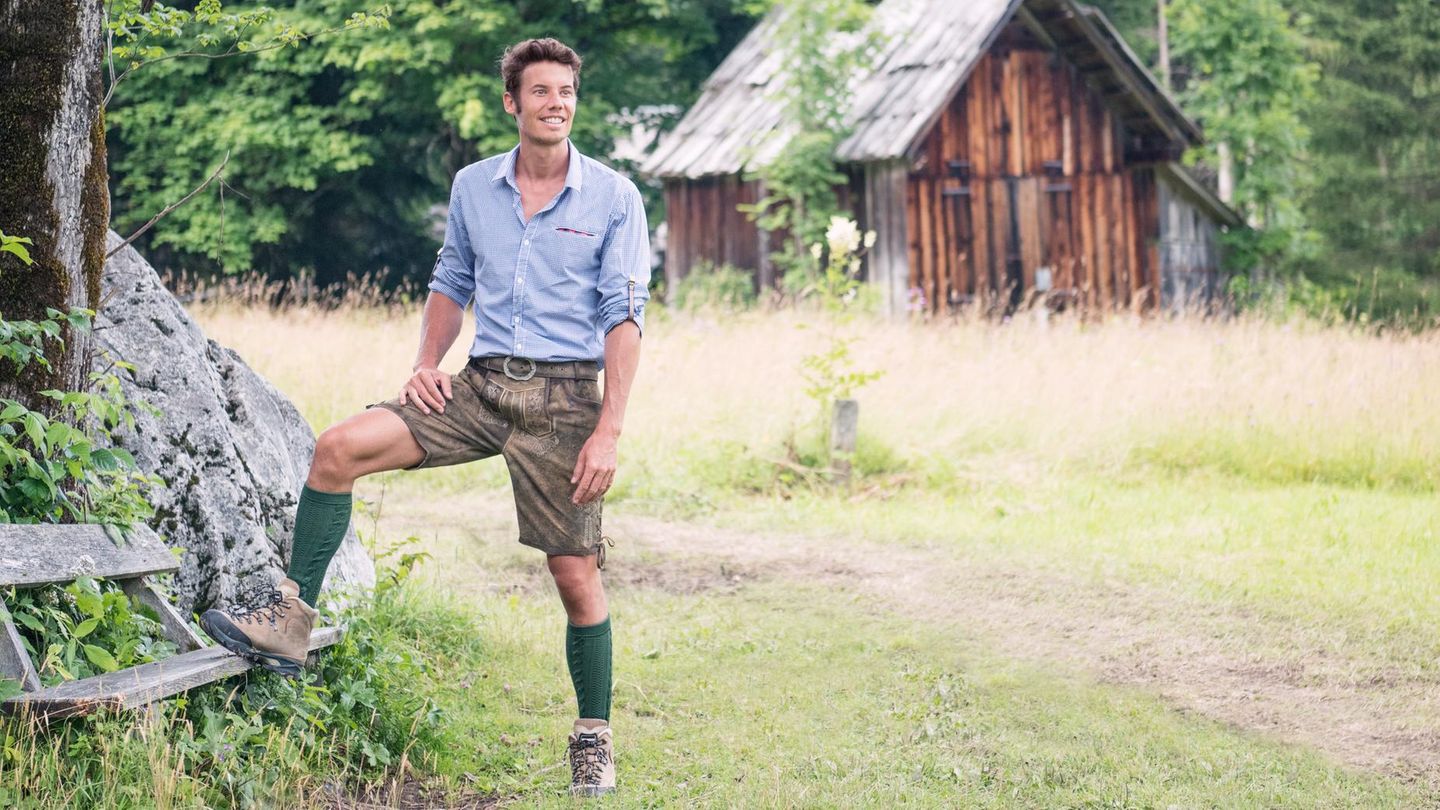Traditional fashion
Between Oktoberfest and everyday life: reduced traditional shirts
Copy the current link
Add to the memorial list
How classic cuts, fabrics and details in traditional costume shirts can be sustainable again today – beyond clichés and festive folklore, reveals star.
No other German folk festival stands as much for traditional costumes as the Munich Oktoberfest. Already early in the morning you will encounter carefully ironed and elaborately decorated shirts in the street and S-Bahn, combined with dirndl or traditional pants. On the campground you can see the beer tent controls in their colorful dirndls. The roots of this clothing continue to range around as just in the greater Munich area: in Franconia, South Tyrol, Hesse or Saxony, at least traditional shirts were also a long -natural companion in everyday life – of course without today’s staging character. They also served for field work as well as for church. Only through the Oktoberfest did the traditional shirt get the paint as a fashionable statement.
The characteristic starring, reinforced seams on the collar and cuffs, the robust button strips and the fabrics used – from linen and cotton to mixed fabrics to warming flannel – characterize traditional shirts and also make them an interesting piece of clothing in other contexts. Failures such as Slim, Regular or Comfort Fit vary the degree between folkloric homage and urban integration. Color-colored, discreetly checked patterns, contrasting caps in the collar or small tone-in-tone details, also allow loose wear with jack. And so the traditional shirt arrives in the now and can also be worn away from the festivals. But how and which shirts are recommended? We clarify this below.
Fabric choice and the understanding of the season
The choice of material follows seasonal and functional considerations. Linen offers cooling effect in summer and requires conscious handling of wrinkle folds; Flanell, on the other hand, conveys a soft warmth in autumn. Breathes cotton, lets moisture escape and is washing machine -safe, while mixed tissue is easy to comfort with the properties of natural fibers. Technical details are also crucial: reinforced collar, double steps seams, reciprocal stitches on button holes. These characteristics determine much more about durability and usefulness than it seems superficial.
Traditional shirts – use style in everyday life
A subtly, fine-cared shirt under a denim jacket gives the overall picture a light folkloric impact. If you choose a Comfort-Fit model, you have more freedom of movement when cycling, while Slim-Fit variants create a clear contour with the chino or jacket. Even in the case of professional appointments, a shirt with tone-in-tone karo can be reserved under a Blazer without appearing negligent.
A classically cut caro shirt in muted colors can also be carried under a light quilted vest without being overloaded – especially in the transition period when the weather and temperature switch between breakfast and end work. If the collar is easily opened, a contrast stock flashes out, which gives the look a manual touch without tipping into the costume. In combination with robust footwear and narrow belt, the shirt can be integrated inconspicuously into the weekend wardrobe. Even in the urban environment, it does not act like a foreign body, but as a consciously set quote of a rural aesthetics. Worn in open state above a simple shirt, the shirt also receives a certain nonchalance that is reminiscent of early mountaineering pictures – just reinterpreted.
A shirt, many styles: from subtle to usual
And which shirts should you add to your wardrobe? You can start with a simple, white traditional shirt in a fine cotton, like that . The few details, pie on the button placket and indicated horn look on the relatively simple buttons ensure the traditional touch. Under a blazer or rolled up, this model cuts a good figure at every evening event.
A contrasting example is the fir green whose pattern consists of a dark green with fine white-red accents. Worn under a dark blue cardigan, only the collar pattern appears. But it is also worn alone. The medium fabric density prevents excessive fluttering in light wind, and reinforced shoulder seams provide more stand-a combination of rural denim feeling and urban understatement.
With the rust -colored the transition between the forest walk and the weekly market becomes fluid. Holded in warm brown tones, it has regular fit, which gives the fabric a little reminds of a handcrafted vest. Horn buttons reinforce the connection to traditional traditional costumes. The softly roughened inside remains fluffy even after several carrying situations and deliberately looks craftsmanship without appearing rustic.
This offers a bright light blue in the linen cotton mix . With the light fabric and the modernized cut it also becomes an eye-catcher during the summer meeting on the museum terrace. The fabric slides over the upper body without much weight, when the sun is slowly falling-can later be placed over a T-shirt and thus creates a fresh three-layer look. The details are subtly set: stable seams, straight cuffs, a clean button placket with stiffening.
If you want to be classic but subtle, you can find the Light blue caro with deer horn buttons a good shirt. It shows how subtle costume can also be worn: if the collar only a fine indication of traditional roots, while the rest acts rather civil.
Traditional shirts – overview
The selection between Slim, Regular and Comfort Fit reflects lifestyle as well as clothing function. Slim Fit is characterized by a waisted fit, Regular Fit offers classic shirt optics with a little more width, while Comfort Fit creates movement space. If you are traveling a lot, for example by bike or when shopping, do not only choose from a pattern, but also according to shape – and this is the only way to keep the shirt a steady companion.
*This article contains so-called affiliate links to products in online shops. If a user clicks on it and buys something, the publisher receives a commission from the dealer, not from the manufacturer. Of course, where and when you buy a product is up to you.
Source: Stern
I am an author and journalist who has worked in the entertainment industry for over a decade. I currently work as a news editor at a major news website, and my focus is on covering the latest trends in entertainment. I also write occasional pieces for other outlets, and have authored two books about the entertainment industry.




